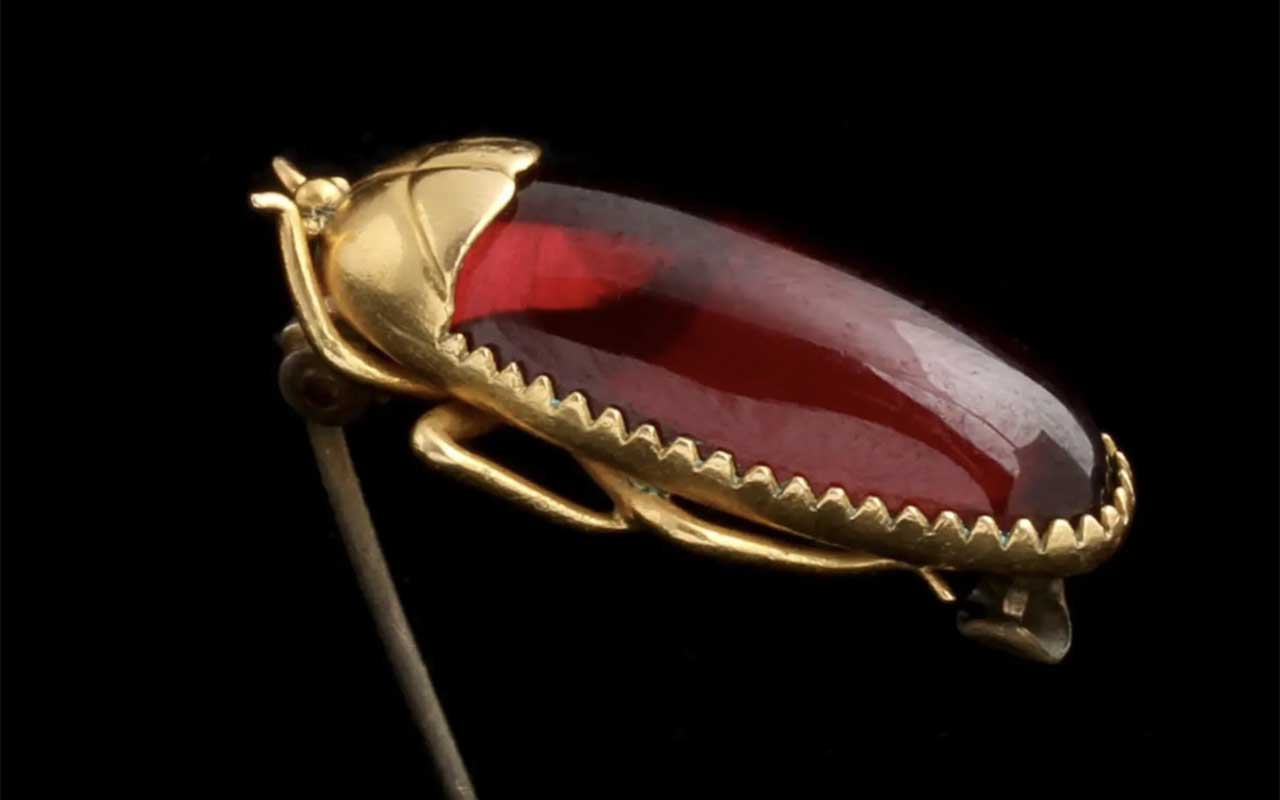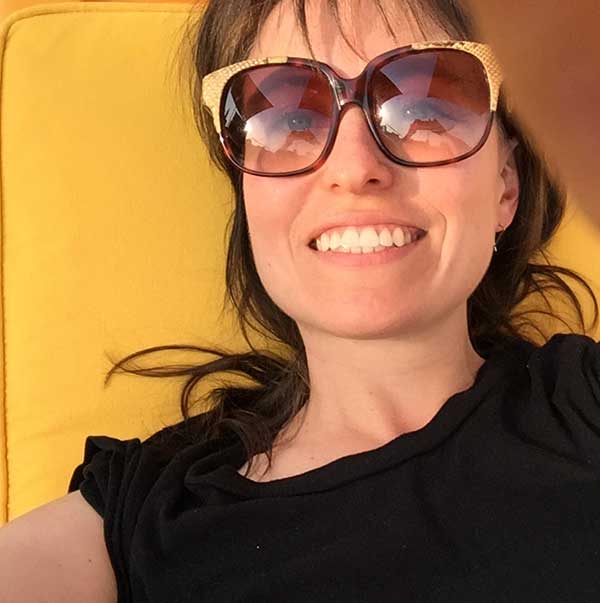Main Street Business

JEWELRY HISTORIAN
Erica Weiner’s website clearly states “the weirder the better” when describing its antique jewelry from the twelfth through the twentieth century. Weird? Maybe. Beautiful? Most certainly! We were able to catch up with Erica to learn about her company’s origin story and the development of its jewelry designs and business.
How did you and your partner Lindsay meet and start your business?
It was New York City in the late 1990s, and she was my little sister’s college roommate. After many nights of crazy partying, we remained peripherally in each other’s lives until one day in 2006. She was working as a waitress at a Russian cafe, and I was bouncing between jobs as a theatrical costumer and an underpaid fashion stylist. Fed up with the fashion world’s BS, I had begun making necklaces using scraps of chain, vintage charms, and a pair of pliers. A buyer from Anthropologie found me selling those necklaces off a folding table at the then-brand-new Brooklyn Flea, and emailed me with a massive wholesale order. After using the brand-new Google to figure out what “wholesale” meant, I took a 24-hour panic nap and then called Lindsay to come over and help me. “Bring a pair of pliers,” I told her.
The next decade and a half was a blur of hiring, lease-signing, lessons in finance, lessons in failure, and wild successes. We made tens of thousands of pieces of brass and silver jewelry in various studios, all against the backdrop of the Lower East Side in the early 2000s. The soundtrack was excellent. The boyfriends were weird. Our clothes were weirder.
 What inspired the shift in focus?
What inspired the shift in focus?
In 2010 I got engaged with a 1920s diamond ring from Doyle and Doyle, then our neighbors, and we fell in love with antique jewelry. The transition from mass-market handmade vibes to high-end fine jewelry had begun. Our collection grew organically as we followed our interests and shamelessly schmoozed with the dealers we most admired. We read everything we could and researched incessantly. No antique shop within 100 miles was safe from us and our endless questions. We started to book regular trips to London to hit the suburban antique show circuit, and visited the V & A Museum more times than we can count. Our art history and anthropology majors had finally come into use.
We love to translate the secret language that antique jewelry speaks. Context is important: what was happening in the world when your jewel was made? Who made it? For what purpose? The things we fall in love with aren’t always the prettiest, or the most precious, or the most immaculate. We love a story: give us an obscure reference, an esoteric symbol, a bad repair, a strange color combination, a “what the hell is that?” moment. Magic is preserved in these funny little objects.
Lindsay and I always look at jewelry as a lens through which we can view human history. Through particular – and sometimes peculiar – ways, it expresses universal human experience: hope, joy, grief, regret, lust, nostalgia. We feel these feelings so strongly, but it’s helpful to remember that people have felt the same things since the dawn of time. Humans hundreds and thousands of years from now will still experience them. And they’ve adorned themselves, expressing their feelings through symbols, colors, and motifs that sometimes, after cultures change, need a little translation. Our history nerd selves will help you out with that part.
You know that feeling you get when you go into the Metropolitan Museum, you see things that were made 2,000 years ago, and you feel time collapse? That’s what we’re going for. We aim to broker a feeling of awe; through our jewels, you can feel a sense of perspective on survival and beauty. These tiny jewels have endured lifetimes of good-knows-what. And like DNA, we can pass them on after we’re gone.”
What were these lessons in failure and finance?
When you’re running a business that’s 20 years old that early on that had two retail stores and 20 employees, you learn a lot of lessons. Our stores were wildly popular until they weren’t, and then we shut them down.
You completely changed your business from funky wholesale accessories to unique antique Victorian and Georgian jewelry? Why the change?
The world changed, and we changed. We were older and no longer our customer. We didn’t shop at Urban Outfitters. With two young children, I could no longer work the hours with the intensity that had kept us in business. We both asked ourselves what we wanted our lives to be like. We had to rethink everything and found a great business advisor who guided us.
I had studied art history at Vassar with a focus on the 19th century – the beginning of the industrial age – and had begun collecting Georgian and Victorian jewelry. We followed our interests. Lindsay and I both believe strongly that you can’t stay engaged if you chase dollars. We do believe strongly in what we are doing now.
Is your website important to your business?
We had a website from 2008, the earliest days of e-commerce, and invested tens of thousands of dollars in our online presence when we were making funky jewelry. That continues today with social media driving clients to our site. We just hired someone to do a Pinterest strategy for us.
Where do you find your antique pieces?
It is getting harder and harder to find great stuff. 90% of our product is sourced from a network of trusted dealers that we have worked with for years. We seldom buy from people we don’t know. We do like to attend the huge international show in Miami, but also the shops in Portobello Road in London.
You and your partner live on opposite sides of the country. How do you make that work?
Lindsay, an anthropologist and a gemologist, does the photography and manages our one full-time employee, who handles all the order fulfillment, customer care, and inventory out of our operations base in a mansion – the third oldest building in Portland. We do special events there as well. I do most of the writing for the website. We also have fabricators who make jewelry from our designs in New York and in the small jewelry district in Portland.
Our own Victorian designs are about 25% of our business. There’s a lot of FedExing going on. Our website has a robust back end where Lindsay and I share writing and pricing duties. Together we go on buying trips in New York, Paris, Miami, and London.
How did you end up in Pine Plains, NY?
I dated a guy who had a weekend house up here. We got married, had kids, and decided to live up here full-time. I’m still adjusting and trying to figure out how to do things. We were included in the wildly successful makers market at Stissing House before Christmas and were embraced by local clients. It was fantastic to deal with buyers face-to-face, and no one asked about prices.
Who is your customer?
We meet customers in person at the trunk shows and events like Stissing House. Our customer is an educated, thinking woman shopping for herself, her female partner, or her daughter. They are powerful, confident women looking for timeless jewelry that is rooted in history, not necessarily something that makes them more physically attractive.
What are your most popular products?
Snakes are always popular, and pins with little charms and pendants are suddenly doing really well. Signet rings, especially with occult imagery seem to be sought after. Lockets with sentimental texts are always popular. Our sale at the end of March is overwhelmingly popular. We offer huge discounts on merchandize we want to move.
You know some fun facts about parrots?
Yes! The Kama Sutra lists teaching a parrot to speak as one of the 63 things a man should master; in Pliny the Elder’s writings he advises owners to hit the birds on the head to motivate them to speak (please don’t do this); some varieties of parrot can live to be octogenarians! The first recorded pet parrot in the British Isles (an African grey) belonged to Henry VII, but modern parrot-keeping in Britain didn’t really kick off until the 1800s. This unusual Victorian parrot (image below) is modeled in silver with pavé turquoise in lieu of feathers and red garnet eyes. The exotic fowl perches on a gold perch and hands from a new 18” 14k gold chain. •
To learn more about Erica Weiner, visit ericaweiner.com.


